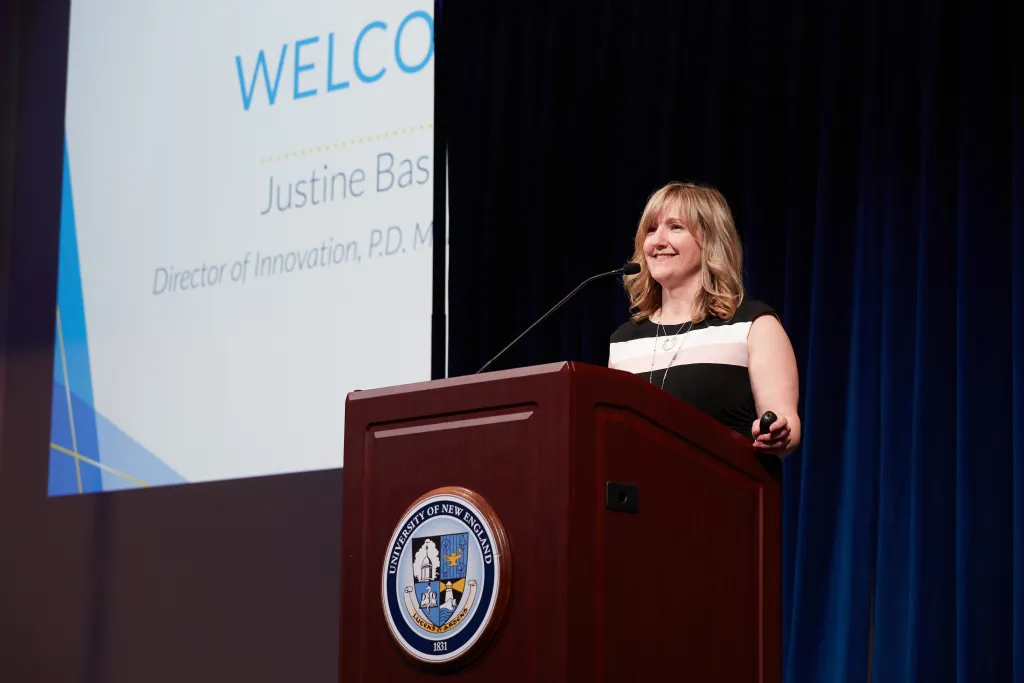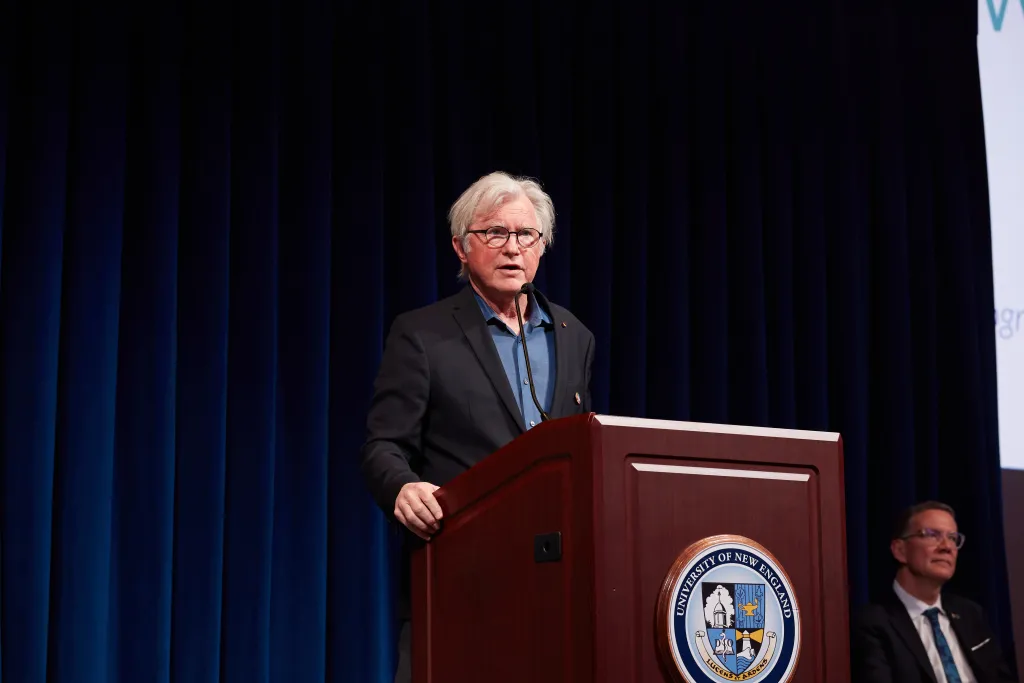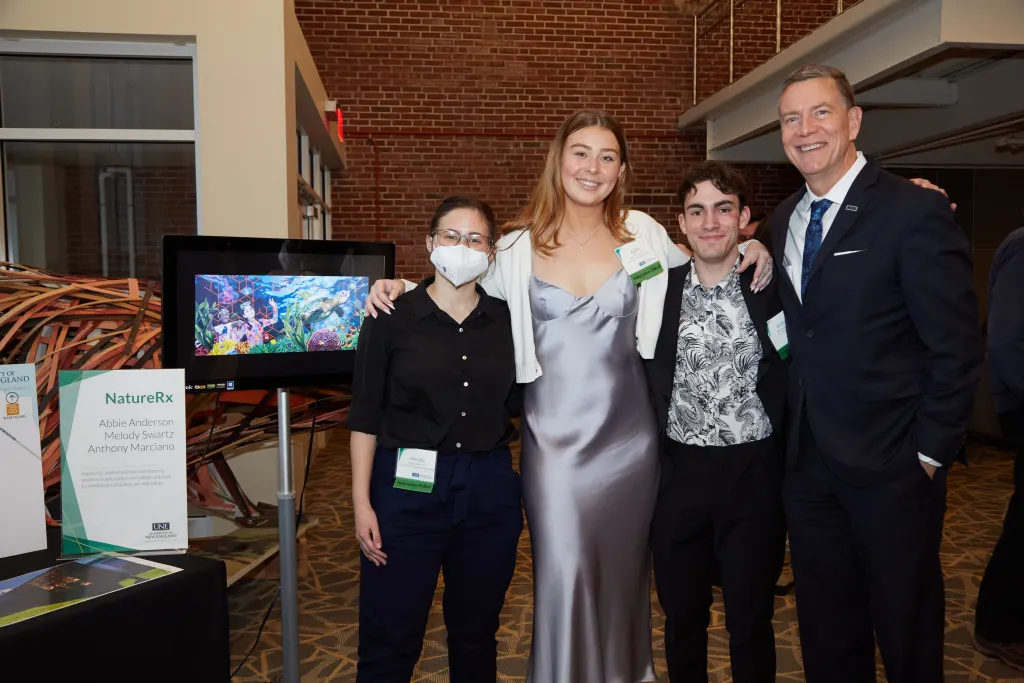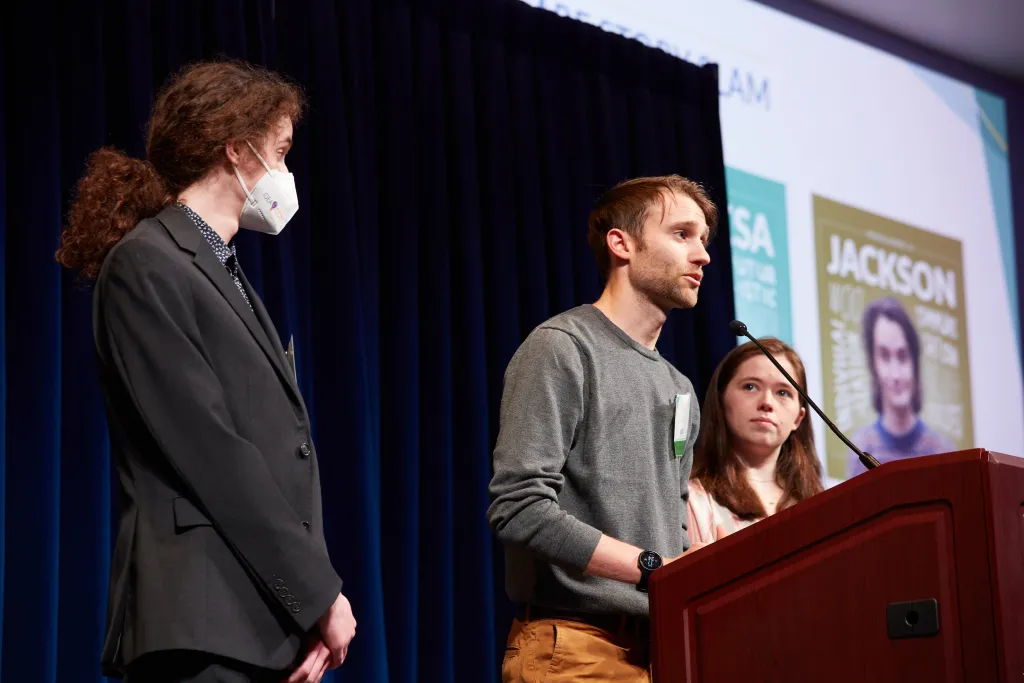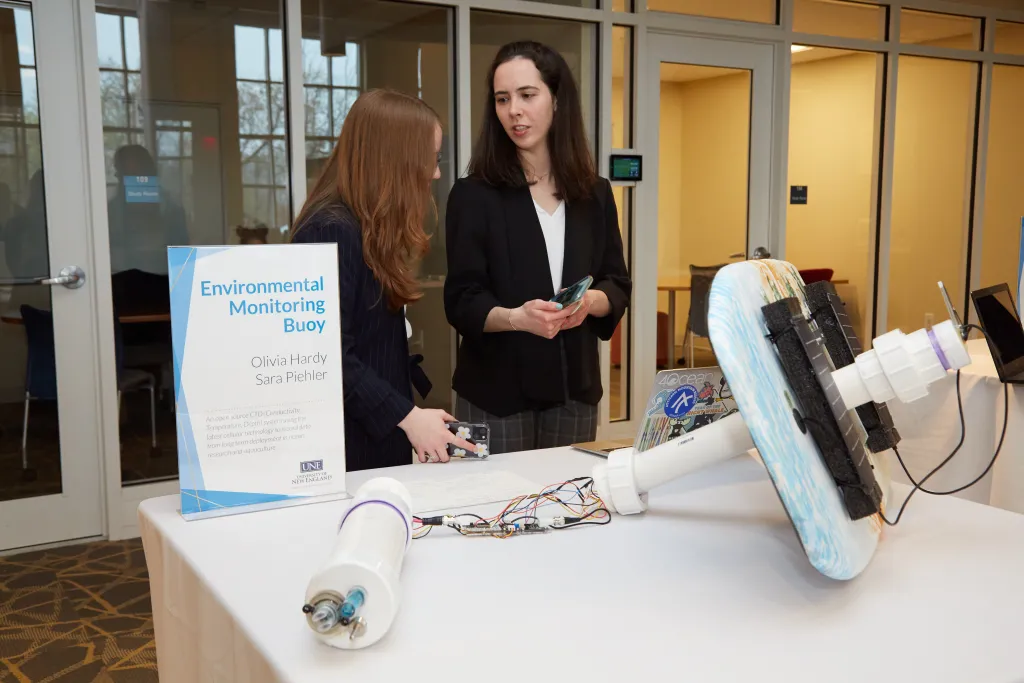Student talent shines at UNE’s first Innovation Showcase

Animated interactive art installations, conceptual structures to redefine shared spaces, devices to track water quality at the tap of a touchscreen, and a health care roundtable about cultural understanding — all were, among many more, student projects highlighted at the University of New England’s first Innovation Showcase, which brought together students from across the University’s many academic programs and outlets of creative thinking.
More than 100 people gathered in Innovation Hall on UNE’s Portland Campus for the event, which recognized the work of students in the University’s P.D. Merrill Makerspace and Shaw Innovation Fellows program, as well as top innovators in the Maine Ideas Challenge.
The event space buzzed with curious minds inquiring about each other’s projects — including a health care story slam organized by Chris Barr (A.B.S.N., ’22) and a cultural competency roundtable for medical students organized by Labina Faizizada (Medical Biology, ’23), both of whom are Senior Shaw Innovation Fellows.
David Evans Shaw, founder of IDEXX and CEO of the Black Point Group — who on May 21 will receive an honorary Doctor of Science from UNE during the University’s 187th Commencement — gave the keynote address, which outlined the principles of environmental, social, and governance (ESG) investing as a business model.
Following the main ceremony, Class of 2022 marine sciences students Sara Piehler and Olivia Hardy showcased their project — a buoy that can remotely monitor oceanic conditions including temperature, pH, and turbidity — which they created in UNE’s P.D. Merrill Makerspace.
The cost-effective device utilizes LTE CAT-M1 with EtherSIM, a free network and affordable cell communication option that can transmit data as far out as four miles. In the short term, the students said, they plan to deploy the buoy on shellfish farms in Casco Bay. Further out, they hope to see their affordable design used by developing nations to monitor their own water conditions.
“The relatively simple design of our project is an opportunity to involve citizen science and help communities get involved and informed about water quality,” Piehler explained.
“This experience was invaluable for the two of us, and we were both extremely excited to discuss the scope of this project with community members as well as educate curious individuals about how our buoy can be used in our local communities to monitor oceanic conditions and help shellfish farmers,” Hardy reflected.
Justine Bassett, M.S., director of Innovation at UNE and the P.D. Merrill Makerspace, said that students who participated in the event showed incredible determination as they encountered unforeseen challenges in completing their projects.
“Whether these students were pursuing a business idea or a change on campus or in their field, they demonstrated inspiring teamwork, creativity, and grit,” Bassett remarked. “They described challenges they had to work through and unexpected setbacks, and it's exciting to hear that they not only persevered but also learned that that is exactly what it takes to make change happen. I can't wait to see what they do next.”
